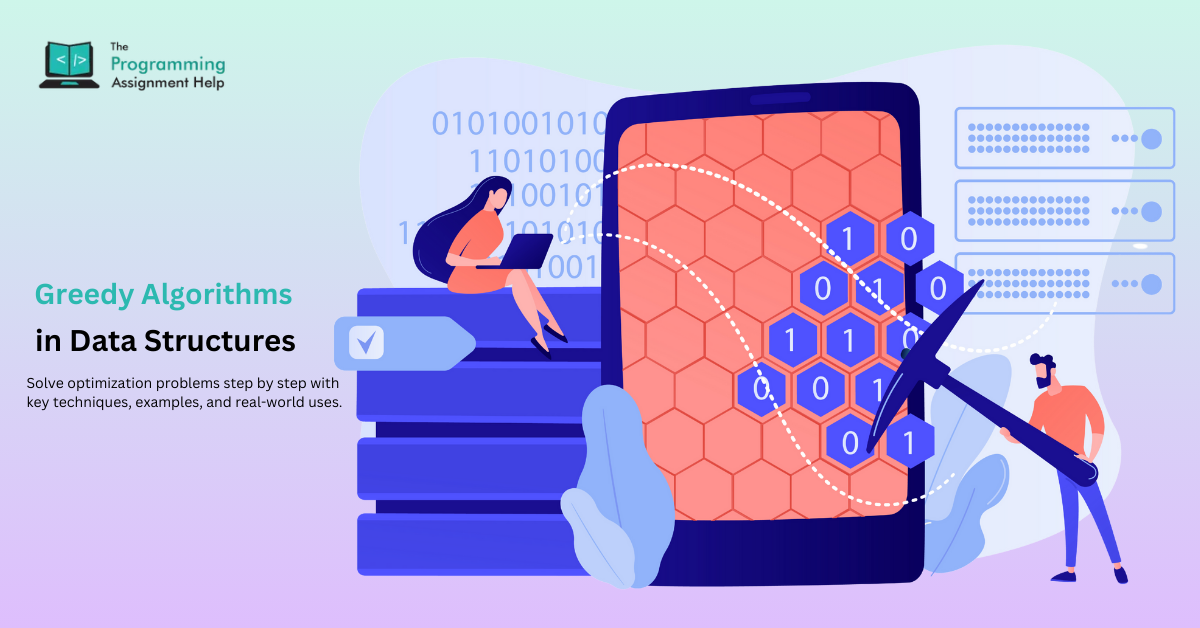
- 18th Sep 2025
- 00:07 am
- Admin
In algorithm design, different strategies are used to solve problems efficiently. One of the most straightforward yet powerful approaches is the Greedy Algorithm. It works by making the best choice at each step with the hope of reaching the overall optimal solution. Although imperfect, greedy algorithms are easy to use and can in many cases work well in real-life.
What is a Greedy Algorithm?
Greedy algorithms act according to the principle that the best solution is selected in each step and that hopefully the selection of such solutions will lead to a globally optimal solution.
- Problem-solving process based on a step-by-step approach.
- In every step, make the best decisions without a second thought of making previous decisions.
- Suitable for problems where local optimization leads to global optimization.
Key Characteristics of Greedy Algorithms
It is important first to know the characteristics of greedy algorithms before proceeding to give some examples.
- Local Optimization: At each step, the algorithm chooses the best local option.
- No Backtracking: Once a decision has been made there is no way to retract it.
- Efficiency: Mostly quicker than other methods such as dynamic programming.
- Applicability: Works best when local decisions also lead to global optimal results.
Steps in Designing a Greedy Algorithm
To create a greedy algorithm, a few common steps are followed:
- Define the Problem: Clearly indicate the aspects that need to be optimized.
- Identify Subproblems: Break down the task into a group of subsidiary decisions.
- Apply the Greedy Choice: In every step, choose the one that appears best.
- Check Feasibility: Make sure that the step taken does not break problem constraints.
- Repeat Until Complete: Continue until the solution is constructed.
Popular Greedy Algorithms and Examples
Several well-known algorithms are based on the greedy approach. Each one applies the greedy principle in a unique way.
Activity Selection Problem
This problem demonstrates how to schedule the maximum number of activities using a single resource (like a classroom or CPU).
- Sort activities by finish time.
- Select the earliest finishing activity first.
- Skip overlapping activities and continue selecting compatible ones.
- Time Complexity: O(n log n) (due to sorting).
Huffman Coding
A greedy algorithm used in data compression to minimize the average length of codes.
- Build a frequency table of characters.
- Create a binary tree where less frequent characters have longer codes and frequent ones have shorter codes.
- Efficiently reduces storage requirements.
- Used in file compression formats like ZIP.
Kruskal’s Algorithm
This algorithm finds the Minimum Spanning Tree (MST) in a weighted, undirected graph.
- Sort all edges by weight.
- Add edges one by one to the MST if they don’t form a cycle.
- Continue until all vertices are connected.
- Time Complexity: O(E log E), where E is the number of edges.
Prim’s Algorithm
Another MST algorithm that grows the spanning tree from a single starting node.
- Start with any vertex.
- Repeatedly add the smallest edge that connects a new vertex to the tree.
- Continue until all vertices are included.
- Works well for dense graphs.
Dijkstra’s Algorithm
It finds the shortest path(s) out of a source node to other nodes in a graph whose edge weights are non-negative by using the algorithm.
- Pick the nearest unvisited node at each step.
- Update distances to its neighboring nodes.
- Repeat until all nodes are processed.
- Time Complexity: O(V²) (basic version), O(E + V log V) with priority queues.
Advantages of Greedy Algorithms
Greedy methods offer significant benefits when the problem satisfies greedy properties.
- Simple to design and easy to implement.
- Usually runs faster compared to other approaches like dynamic programming.
- Works well for optimization problems with greedy choice property.
- Requires less memory since it does not rely on storing subproblem results.
Limitations of Greedy Algorithms
Although it is efficient, greedy algorithms do not necessarily give the best outcome.
- May fail when local optimum does not lead to global optimum.
- Requires the problem to exhibit optimal substructure and greedy choice property.
- Cannot solve all complex optimization problems (e.g., Knapsack problem needs dynamic programming for accuracy).
Applications in Real Life
Greedy algorithms are practical and widely used in real-world problems due to their efficiency.
- Network Routing: Finding shortest paths for data packets.
- Scheduling: Allocating tasks to resources for maximum efficiency.
- Compression: Huffman coding in file compression.
- Graph Problems: Minimum spanning tree, shortest path, and connectivity.
- Optimization: Resource allocation and load balancing problems.
Conclusion
Greedy algorithms are a powerful tool data structures and algorithms, as they allow rapid and effective resolution to any number of optimization problems. They have numerous applications ranging between shortest path finding and data compression. They however, are not the best working when problems satisfy the greedy choice and optimal substructure properties.
If you’re looking to strengthen your understanding of algorithms or need guidance in solving complex assignments, our Data Structure Assignment Help service provides expert assistance with detailed solutions and practical examples.








